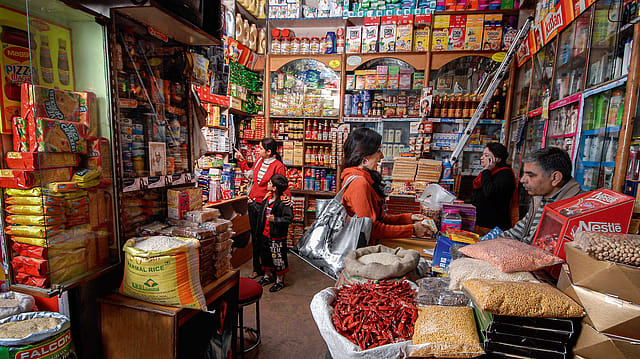Consumer sentiments reverse recovery from pandemic lows: CMIE
ADVERTISEMENT

The improvement in consumer sentiments seems to be slowing down, or even reversing, in May while other economic indicators reclaim their pre-pandemic levels. A recent report by the Centre for Monitoring Indian Economy (CMIE) shows that while its index of consumer sentiments could end the month marginally higher than April, the signs of deceleration are becoming evident.
In the week ended May 29, 2022, the index of consumer sentiments (ICS) registered an unusually sharp decline of 9.4% as sentiments fell across urban and rural regions with varying intensity. Urban regions saw the index fall by 5.9%, whereas the rural regions reported a steeper decline of 11.4%. The 30-day moving average on May 29 dropped to 67.91, compared to 68.09 just a day earlier.
“The month of May could still end with the ICS higher than it was in April. If it does so, it would be the highest compared to any month since March 2020 i.e. before the lockdowns. However, there are signs that the steady improvement in consumer sentiments seen so far during 2022 may be slowing, or even reversing,” estimates CMIE CEO Mahesh Vyas.
January 2026
Netflix, which has been in India for a decade, has successfully struck a balance between high-class premium content and pricing that attracts a range of customers. Find out how the U.S. streaming giant evolved in India, plus an exclusive interview with CEO Ted Sarandos. Also read about the Best Investments for 2026, and how rising growth and easing inflation will come in handy for finance minister Nirmala Sitharaman as she prepares Budget 2026.
Even so, the expected slender growth in consumer sentiments during May indicate slowing down of the monthly growth rate for consumer sentiments. ICS, used by CMIE to measure the indicator, saw monthly growth rates between 3% and 5% during four months of January through April.
“Compared to other economic indicators, the recovery in the ICS from the lockdown-induced drop in April 2020 has been distinctly slower. Most economic indicators have recovered to their pre-lockdown levels,” the report states.
Real gross domestic product (GDP) and gross value added (GVA) in 2021-22 were about 2% and 3% higher, respectively, than in 2019-20. Meanwhile, the central government’s total tax collection in 2021-22 increased 25% compared to 2019-20. However, the ICS in April 2022 lagged by a substantial 36% than it was in the pre-lockdown month of February 2020.
Apparently, ICS, which includes perceptions about current and future well-being of households, takes longer to recover from a severe economic shock, the report notes.
First among the problems with the trajectory of consumer sentiments, as per the study, is its slow growth rate compared to other economic indicators in recent months. “The ICS grew by 4% in January and then the growth accelerated to 5% in February. But in March, it slowed down to 3.7%. It slowed further to 3% in April. And now in May, it is expected to slow down further probably to less than 1%.”
Moreover, the receding consumer sentiment growth now seems to be reversing. This can be seen in both the 30-day moving average as well as the weekly data of ICS. The most worrisome part, CMIE states, is that this recent reversal is moving at a much faster pace than the pace of recent rise.
“The trajectory of the ICS is changing because consumer expectations are turning adverse at a faster pace than consumer perceptions regarding their current well-being,” CMIE opines.
“We do not know what could have caused the sentiments in general and expectations in particular to sour in recent times. Given that the fall was more striking in rural India, it is quite possible that the controls on wheat and sugar export could be responsible. We may conjecture that measures to control inflation hurt sentiments in rural India but the continued elevated inflation hurts urban India,” it further adds.
